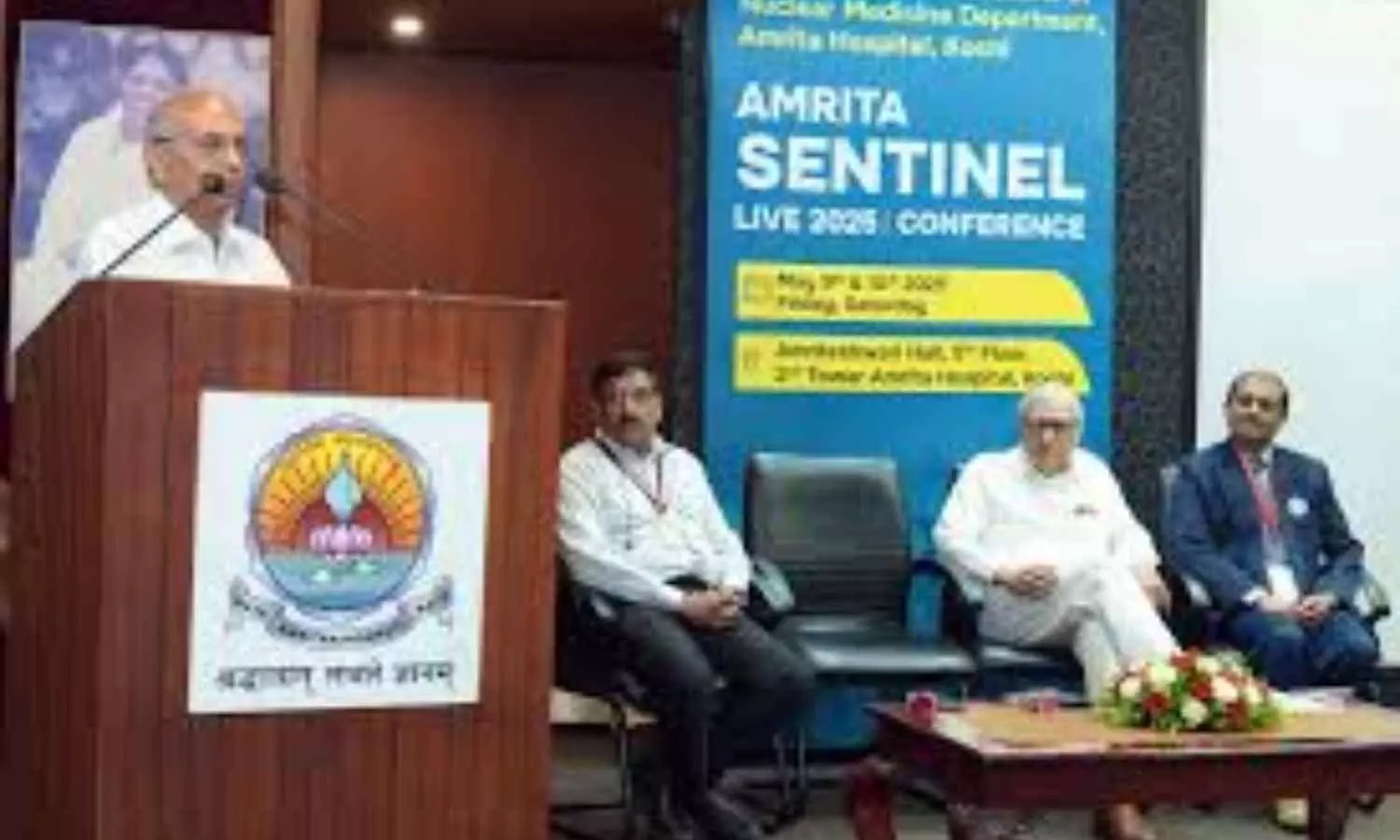Study finds no increased risk of gynecological cancer with testosterone use after five years
Powered by WPeMatico
Powered by WPeMatico
Powered by WPeMatico
Powered by WPeMatico
Powered by WPeMatico
Powered by WPeMatico

Kolkata: A woman who had been battling for her life for the past four months after she was allegedly administered expired saline at Medinipur Medical College and hospital (MMCH) in Paschim Medinipur district, died on Monday, a health department official said.
Four months after a woman was allegedly administered expired saline at a hospital in Paschim Medinipur district rendering her critically ill, she died in a medical establishment in Kolkata on Monday.
The patient, Nasrin Khatoon, died at the state-run SSKM Hospital in Kolkata, where she was being treated since January.
Khatoon was allegedly administered the “expired” intravenous fluid at the Midnapore Medical College and Hospital in January when she was in an advanced stage of pregnancy, news agency PTI reported.
Also Read:Saline Death Case: Suspended doctor moves Calcutta HC, Accuses CID of harassment
Another pregnant woman, identified as Mamoni Rui Das, died allegedly following administration of “expired” Ringer’s Lactate saline at the same hospital in January.
Ringer’s Lactate is an intravenous fluid that doctors use to treat dehydration and restore fluid balance in the body.
“Following treatment in all these months, Khatoon’s condition was improving. She was shifted from the ICU to a general ward some time back. But her condition started deteriorating from May 9, and she died this morning,” the official said.
Khatoon was undergoing dialysis regularly since she was admitted to the SSKM Hospital, he said.
Rui Das died on January 10, while the condition of four others — Mampi Singh, Nasrin Khatoon, Minara Bibi, and Rekha Sau — admitted at the same hospital, deteriorated and were brought to SSKM Hospital.
The development prompted the health department to constitute a 13-member committee to investigate the matter.
Mampi Singh and Minara Bibi were discharged later, while Nasrin’s treatment continued at the Kolkata facility, the official said.
West Bengal CID has been investigating the matter as the state government suspended 12 doctors of the Midnapore Medical College and Hospital for negligence in connection with the matter, reports PTI.
The state government also provided Rui Das’ family with compensation of Rs 5 lakh along with a government job.
Medical Dialogues had earlier reported that following the recent case of expired saline administration that allegedly led to the deaths of a woman and her newborn, the Calcutta High Court has granted protection to a suspended junior doctor who was reportedly subjected to coercive police action.
Also Read:Expired Saline Death Case: MMCH Junior doctors call off cease work
Powered by WPeMatico

Mumbai: Piramal Pharma Limited, a global pharmaceuticals and wellness company, in conjunction with the 2025 Select USA Investment
Summit, has committed to a $90M investment plan towards expanding two of the Company’s US facilities.
These expansions are in response to ongoing demand from US customers, in support of the trend
towards US onshoring of drug supply. Piramal Pharma is making brownfield expansions to
existing sites, financed by bank loans and internal accruals, which is the fastest, lowest risk, and most
economical way to add new capacities to the US market.
Piramal Pharma’s Lexington, Kentucky, facility specializes in sterile compounding, liquid filling, and
lyophilization for sterile injectable drug products. The site’s expansion—which includes 24,000 square
feet of manufacturing space and a new laboratory—adds commercial-scale manufacturing. Key additions include a new filling
line, two commercial-size lyophilizers, a special capping machine, and an external vial washer. The
facility is expected to be completed and online by late 2027.
Piramal Pharma’s Riverview, Michigan site, develops and manufactures active pharmaceutical ingredients (APIs) and high potency APIs
(HPAPIs). Here, the company is adding a commercial-scale suite specifically for
the development and manufacturing of payload-linkers. These high potency APIs are used in the
development of antibody-drug conjugates (ADCs) and other bioconjugate drugs. The new payloadlinker suite is expected to be operational before the end of 2025.
These site expansions are expected to generate greater opportunities for integrated ADC projects.
Working synergistically, they will play a vital role in Piramal Pharma’s integrated ADC development and
manufacturing program, branded ADCelerate. With development and commercial-scale capabilities
in mABs, payload-linkers, conjugations, and fill/finish, ADCelerate speeds timelines, enabling project
initiation to GMP drug product in just 12 months with uncompromised quality.
Powered by WPeMatico

Kochi: The Nuclear Medicine Department at Amrita Hospital is celebrating its silver jubilee. As part of the celebration a two-days’ long unique live conference titled Amrita Sentinel 2025 is being conducted.
Dr Prem Nair, Medical Director of the Amrita Hospitals Group, was the chief guest at the inaugural event. Dr. Brigadier Ajoy Menon, Senior Medical Administrator of Amrita Hospital, Dr. Prathapan Nair, Medical Administrator, Dr. Shanmuga Sundaram, Head of the Department of Nuclear Medicine, and Dr. Padma Subramanyam, Clinical Professor, Nuclear Medicine department at Amrita Hospital also addressed the gathering.
The event is jointly organised by the departments of Head and Neck Surgery, Breast and Gynecologic Oncology, and Endocrine Surgery at Amrita Hospital.
Also Read:Amrita Hospital Launches Third Phase of ‘Dengue All’ Vaccine Trial
The conference will focus on the scientific principles and modern medical significance and relevance of sentinel lymph node imaging and biopsy in early cancers of breast, Head & Neck and genecology. Experts will conduct sessions on various related topics.
Medical Dialogues had earlier reported that Dr Prem Nair, the Medical Director of Amrita Hospitals Group, has been elected as the National President of the Telemedicine Society of India. The announcement was made during Telemedicon 2024, the annual international conference of the society, held at the Postgraduate Institute of Medical Education and Research (PGIMER), Chandigarh.
Currently, Dr Prem Nair serves as the founding President of the Kerala chapter of the Telemedicine Society of India, a release said.
Dr Prem Kumar Vasudevan Nair currently serves as the Medical Director at Amrita Institute of Medical Sciences at the Kochi campus of Amrita University. He is a skilled clinician par excellence and also serves as a Professor at the Department of Gastroenterology at the School of Medicine, Kochi.
Also Read:Amrita Hospital Faridabad unveils Centre of Excellence for CAR T-Cell Therapy
Powered by WPeMatico

In the first direct comparison study involving individuals with obesity, tirzepatide demonstrated approximately 50% greater weight loss compared to semaglutide. This landmark finding highlights tirzepatide’s potential as a more effective treatment option for weight management.
According to a new head-to-head study of tirzepatide versus semaglutide for weight loss in people living with obesity, but not diabetes, it was shown that over 72 weeks tirzepatide results in an average weight loss of 20.2%, 47% higher than the 13.7% average weight loss for semaglutide. The study, presented at this year’s European Congress on Obesity in Malaga, Spain (11-14 May) and published in NEJM, is by Dr Louis J Aronne, Director of the Comprehensive Weight Control Center at Weill Cornell Medicine, New York, New York, USA, and colleagues.
While both tirzepatide and semaglutide are highly effective obesity management medications, this new study is the first to test, in a head-to-head study, the efficacy and safety of tirzepatide compared with semaglutide in adults with obesity but without type 2 diabetes. The study is sponsored by Eli Lilly & Company, the manufacturer of tirzepatide.
In this phase 3b open-label, randomised, controlled trial, 751 adult participants with obesity, but without type 2 diabetes, in a 1:1 ratio received tirzepatide maximum tolerated dose (10mg or 15mg) or semaglutide maximum tolerated dose (1.7mg or 2.4mg) subcutaneously once weekly for 72 weeks. The mean age of the participants was 44.7 years; most were female (64.7%) and White (76.1%); mean body weight was 113.0 kg, mean BMI was 39.4 kg/m2, and mean waist circumference was 118.3 cm. Average reported duration of obesity was 16 years; and 50% had obesity-related multimorbidity (at least 2 obesity-related complications).
The primary endpoint at week 72 was the percentage change in weight from baseline. Key secondary endpoints included weight reduction targets of at least 10%, 15%, 20%, and 25%, and change in waist circumference from baseline to week 72.
Key inclusion criteria for this trial included being aged 18 years or older, a body-mass index (BMI) of 30 kg/m2 or more, or a BMI of 27 kg/m2 or more and at least one prespecified obesity-related complication (hypertension, dyslipidaemia, obstructive sleep apnoea, or cardiovascular disease), and experiencing at least one unsuccessful dietary effort for weight reduction. Key exclusion criteria included diagnosis of diabetes, prior or planned surgical treatment for obesity, or if within 90 days before screening they had received treatment with a medication for weight reduction or a GLP-1 receptor agonist, or a change in body weight of more than 5 kg.
The mean percentage change in weight at week 72 was −20.2% with tirzepatide and -13.7% with semaglutide – thus 47% higher for tirzepatide. The mean decrease in waist circumference was −18.4 cm with tirzepatide and -13.0 cm with semaglutide – thus 42% higher for tirzepatide. Participants treated with tirzepatide were 30%, 60%, 80% and twice as likely to achieve the weight reduction targets of 10%, 15%, 20%, and 25%, respectively, compared to semaglutide. A total of 19.7% of the participants in the tirzepatide group had a reduction in body weight of at least 30% (an exploratory end point) as compared with 6.9% of those in the semaglutide group, which indicated that the likelihood of meeting this weight-reduction target with tirzepatide was 2.8 times as high as that with semaglutide.
The most common adverse events for both study treatments were gastrointestinal, and most were mild to moderate in severity, occurring primarily during dose escalation.
Weight reduction was around 6% less in males than females for both treatments and is believed to explain the slightly lower weight reduction in the current trial compared with previous trials. The current trial had a higher proportion of males at 35%, especially compared to the STEP non-diabetes trials, which included 19-26% males. The current findings align with results reported for the SURMOUNT and STEP programs as well as recent real-world evidence demonstrating higher weight reduction with tirzepatide than semaglutide.
Dr Aronne explains: “Although it is a single molecule, tirzepatide pharmacologically activates two metabolic receptors, GIP and GLP-1, which have both overlapping and nonoverlapping expression and function. This dual-agonism activity of tirzepatide may contribute to the greater weight reduction observed with tirzepatide than with semaglutide, a monoagonist used in the current trial.”
The results show that as weight reduction increased there were greater improvements in cardiometabolic risk factors, including blood pressure, and blood fat and sugar levels, with both treatments consistent with previous reports. The authors explain that, while some patients will not necessarily require the higher magnitudes of weight reduction to see clinical benefits overall, these findings support the clinical relevance of the current study as the majority of participants receiving tirzepatide (65%) were able to achieve at least 15% weight loss versus 40% for semaglutide; and nearly a third (32%) achieved at least 25% weight reductions with tirzepatide compared to 16% with semaglutide.
They further explain that the additional 5.4 cm extra reduction in waist circumference with tirzepatide compared with semaglutide is also clinically relevant. In a large pooled analysis of waist circumference and mortality, each 5-cm increase in waist circumference predicted a 7% increase in mortality among men and a 9% increase among women. In alignment with these data, published guidance has emphasized the importance of treating patients with abdominal obesity and aiming for a reduction of at least 4 cm.
The trial has certain strengths and limitations. One strength is the diversity of the participants as 19% reported race as Black-African American and 26% reported ethnicity Hispanic or Latino, representative of the populations in the USA living with obesity. The trial’s approach of using the maximum tolerated dose for both treatments addresses a potentially more meaningful real-world question, compared to a fixed dose approach. However, a limitation is that the trial was not blinded, meaning participants knew which drug and the dose they were receiving. However, the authors explain the consistency of the current findings with previously blinded trials supports their generalisability.
Dr Aronne concludes: “Our study shows that treatment with tirzepatide was superior to semaglutide with respect to reduction in body weight and waist circumference.”
Reference:
Louis J. Aronne, Deborah Bade Horn, Tirzepatide as Compared with Semaglutide for the Treatment of Obesity, New England Journal of Medicine, DOI: 10.1056/NEJMoa2416394
Powered by WPeMatico

A new study published in the Diabetes Care journal revealed a significant link between symptoms of autonomic nervous system (ANS) dysregulation and diabetes-related emotional distress in adults living with both type 1 (T1D) and type 2 diabetes (T2D). This two-part investigation highlighted how internal physiological stress responses may be closely tied to the emotional challenges of managing diabetes.
The research included 556 adults with T1D and 299 with T2D. The participants completed online surveys assessing symptoms of ANS reactivity through the Body Perception Questionnaire (BPQ), alongside validated tools for measuring diabetes distress (the DDS-T1 for type 1 diabetes and DDS-17 for type 2) as well as general anxiety (GAD-7), depression (PHQ-8), and demographic information.
In Study 1, focusing on adults with T1D, participants had an average age of 45.1 years. The majority were female (73.2%) and White (95.3%). Self-reported average HbA1c levels were relatively well-controlled at 6.7%, and most participants (72.5%) used insulin pumps. The average duration of diabetes was over two decades (20.6 years). On the diabetes distress scale (DDS-T1), the mean score was 2.3, which was indicative of moderate emotional distress related to diabetes management.
ANS symptoms were measured in two main domains: supradiaphragmatic (related to functions like breathing and heart rate) and subdiaphragmatic (digestive and other lower-body systems). Average T scores were 48.9 and 50.6, respectively, slightly below or near the general population mean (T = 50).
In Study 2, which assessed adults with T2D, the average age was higher at 60.2 years. A slightly lower proportion of participants were female (58.7%), and 82.9% identified as White. The group reported slightly higher HbA1c levels at 7.0%, and diabetes duration averaged 15 years. Medication use varied, with 51.8% on oral medications alone and 39.9% combining oral and injectable therapies. Diabetes distress scores (DDS-17) also averaged 2.3, again reflecting moderate distress. BPQ T scores for this group were similar among the groups with 49.9 (supradiaphragmatic) and 52.0 (subdiaphragmatic).
After adjusting for anxiety, depression, and other relevant factors, this study found that higher diabetes distress scores significantly predicted greater ANS symptom severity across all domains in both groups (p ≤ 0.05). The participants with the highest levels of diabetes distress reported the highest BPQ scores, suggesting that psychological strain may be closely associated with disruptions in nervous system regulation. Overall, these findings illuminate the importance of addressing emotional well-being in diabetes care.
Source:
de Groot, M., Myers, B. A., Stump, T. E., Dana, D., Lewis, G., Kolacz, J., Baker, L., Fox, K. A., & Porges, S. W. (2025). Symptoms of autonomic nervous system dysregulation and diabetes distress in adults with type 1 and type 2 diabetes. Diabetes Care, 48(5), 781–789. https://doi.org/10.2337/dc24-2614
Powered by WPeMatico
